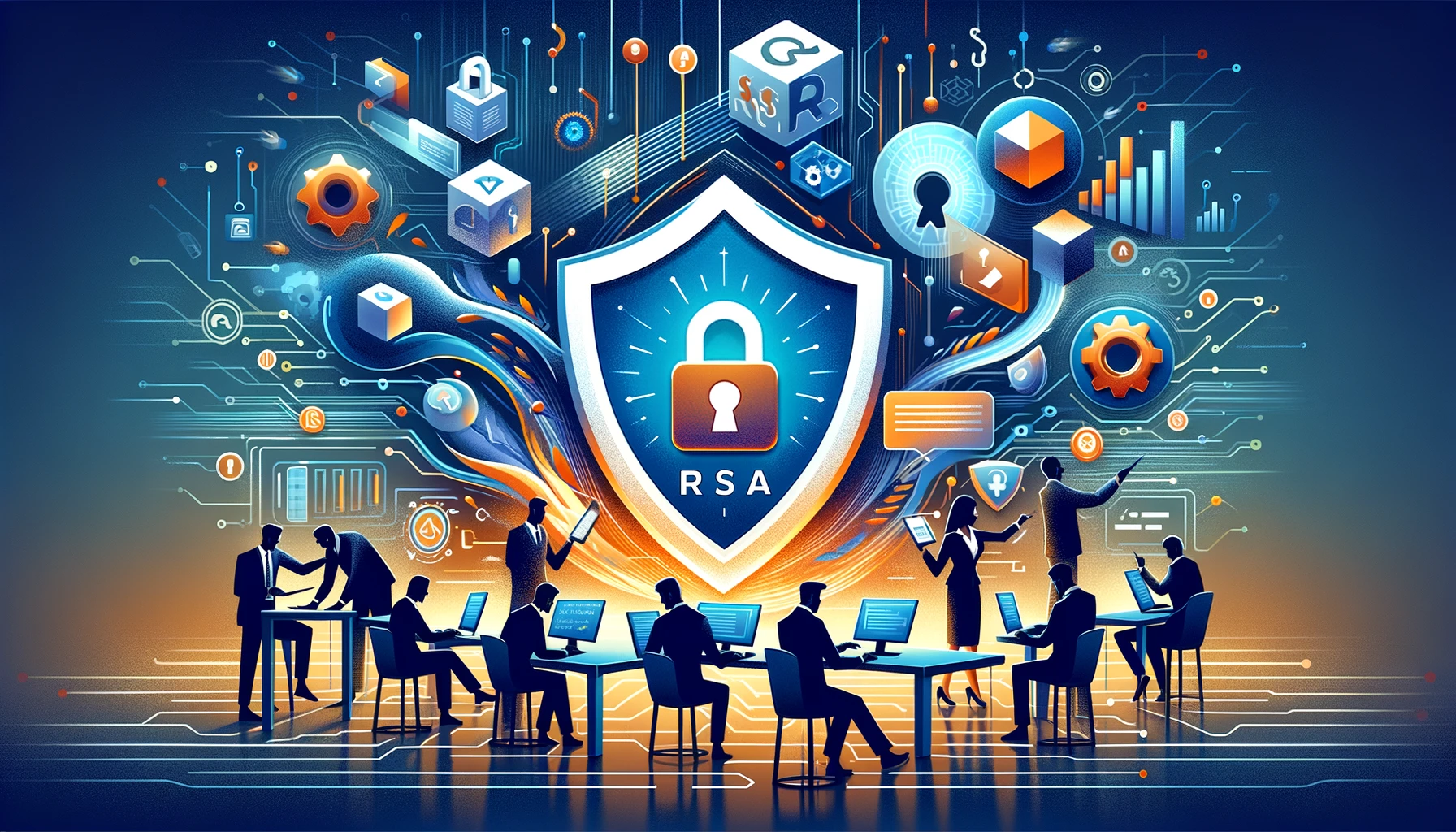How Security Questionnaire Automation Enhances Risk Management

Businesses are more interconnected than ever in today's rapidly evolving digital landscape. With the increasing reliance on third-party vendors and the sheer volume of data exchanged, ensuring the security and integrity of information has become paramount. Enter security questionnaires – a tool that has long been a staple for security teams worldwide. These questionnaires serve as a bridge, allowing businesses to share and evaluate vital security information.
While their importance is undisputed, their traditional format often seems archaic in the face of modern challenges. They can be lengthy, complex, and overwhelming, especially for vendors who might receive multiple such questionnaires from different clients. This highlights a pressing need to understand the intricacies of these questionnaires, the solutions available for automating this process, and the benefits of doing so.
This article will look into the world of security questionnaire automation and aim to shed light on how businesses can enhance their risk management strategies, making them quicker, simpler, and more efficient.
Why are Security Questionnaires Important?
Security questionnaires have emerged as an indispensable tool in cyber risk management. As businesses continue to grow their digital footprints and extend their operations across borders, the need to ensure third-party vendors comply with security standards has intensified. These questionnaires offer a structured way to gather, analyze, and assess potential partners' security practices and protocols.
For organizations, it's not just about ticking a compliance box; it's about safeguarding their reputation, assets, and customer trust. A breach resulting from a vendor's negligence can have catastrophic consequences, both financially and reputationally. Security questionnaires act as part of a multi-layered defense, helping organizations identify potential vulnerabilities in their extended network.
They provide insights into a vendor's security posture, readiness to tackle cyber threats, and commitment to data protection. Essentially, these questionnaires bridge the gap between assumption and assurance, ensuring that partnerships are built on trust and transparency.
The Most Important Elements of Security Questionnaires
The complexity of security questionnaires is reflective of the multi-faceted nature of cybersecurity. They are designed to examine various aspects of an organization's security measures, ensuring comprehensive coverage of all potential vulnerabilities. Some of the most crucial elements that form the backbone of these questionnaires include:
Information Security Policies and Procedures
This pertains to the set of guidelines and processes that an organization implements to manage and protect its information assets. It provides insights into how data is handled, stored, and transmitted, ensuring compliance with industry standards and regulations.
Security Controls and Safeguards
These are the technical and administrative measures to prevent, detect, and respond to security incidents. They encompass everything from firewalls and encryption techniques to user authentication mechanisms and regular security audits.
Data Privacy and Compliance
Data privacy and compliance evaluates how an organization handles personal and sensitive data, ensuring adherence to privacy laws and regulations. It looks into data storage, access controls, retention policies, and the protocols for sharing data with third parties.
Incident Response and Breach Notification
These conceptsfocus on an organization's preparedness for security breaches. It assesses the procedures for detecting, reporting, and addressing security incidents and the communication protocols for notifying affected stakeholders.
Each element serves a distinct purpose, collectively providing a holistic view of a vendor's security landscape. By thoroughly evaluating these components, organizations can make informed decisions about their partnerships, mitigating risks and ensuring robust data protection.
Methods for Tackling Security Questionnaires
Security questionnaires, with their comprehensive structure, require meticulous attention to detail. Tackling them effectively mandates a strategic approach. Different organizations employ various methods, each with its advantages and challenges:
- Manually: The traditional way involves filling out security questionnaires by hand, relying on internal expertise and documentation. While this method offers a high degree of control, it can be time-consuming, prone to human errors, and make it difficult to scale.
- Automatically: With the advent of technology, automation solutions have come to the forefront. They streamline the process, ensuring consistency, speed, and accuracy. Tools and platforms can auto-fill responses based on predefined templates, significantly reducing the manual effort.
- With an MSSP: Many organizations turn to Managed Security Service Providers (MSSPs) to handle security questionnaires. MSSPs bring expertise to the table, offering guidance, best practices, and often utilizing specialized tools to simplify the process.
- Not Doing it At All: Some organizations, regardless of size, might avoid the process entirely. Smaller companies may have limited resources, whereas larger companies may find it difficult because of the sheer volume of vendors. This can be risky as it may result in lost business opportunities and potential compliance violations.
Whether manually or with the help of automation and experts, the goal remains the same: to provide accurate, comprehensive, and timely information to ensure a secure business environment.
Why Are Security Questionnaires Not Meant to be Filled out Manually?
Security questionnaires, while essential, pose significant challenges when approached manually. Firstly, they are time-consuming. The detailed nature of these questionnaires, which can sometimes comprise hundreds of questions, often means that the completion process extends from days to weeks. Secondly, even with the utmost care, manual completion is inherently prone to human error. These errors can arise from misunderstandings, oversights, or mere typos, potentially compromising the integrity of the security assessment.
Consistency is another issue, as without the assistance of automation tools, different team members might interpret and answer similar questions differently. Furthermore, the manual approach is resource-intensive. Dedicated personnel must sift through extensive documentation, cross-reference information, and meticulously fill out the questionnaire, redirecting valuable resources from other crucial operations.
Lastly, the manual method presents difficulties in tracking responses and updating them in light of changing protocols or new information, especially when dealing with multiple clients or vendors.
In light of these challenges, it's clear that while manual methods served a purpose in the past, they no longer represent the most efficient or dependable way to tackle security questionnaires. The shift towards automation is logical and necessary, offering a streamlined process characterized by accuracy and consistency.
How Can Security Questionnaires Automation Prevent Risky Activities?
Adopting automation in security questionnaires isn’t just for efficiency; it's a proactive measure against potential risks. Here's how automation acts as a protective barrier:
- Consistent Assessments: Automation ensures that the responses provided are consistent across the board. By leveraging predefined templates and responses, organizations can guarantee that the information shared is accurate and aligned with their security protocols.
- Timely Risk Identification: Automated systems can instantly flag discrepancies or potential vulnerabilities, allowing organizations to address them promptly. This proactive approach ensures that risks are identified and mitigated before they escalate.
- Data Validation: Automation tools often come with built-in validation mechanisms. This means the data entered is cross-checked for accuracy, ensuring that erroneous or misleading information does not enter the questionnaire.
- Real-time Monitoring: Modern automation solutions offer real-time monitoring capabilities. They keep a vigilant eye on the data, ensuring that any changes or updates are instantly reflected, keeping the questionnaire up-to-date.
- Efficient Risk Prioritization: Automation aids in risk scoring, allowing organizations to prioritize which areas require immediate attention. This ensures that critical vulnerabilities are addressed first, optimizing the resource allocation for risk management.
In essence, automation in security questionnaires is a game-changer. It streamlines the process and instills a layer of protection, ensuring that organizations are always a step ahead in their risk management endeavors.
Best Practices for Tackling Security Questionnaires
Successfully navigating the labyrinth of security questionnaires requires more than just automation. Organizations must also adopt a set of best practices to ensure that their responses are comprehensive, accurate, and beneficial for all stakeholders involved:
- Understand Their Purpose: Recognize that security questionnaires are not mere formalities. They play a pivotal role in establishing trust, ensuring compliance, and building secure business relationships. Approach them with the seriousness they warrant.
- Craft Appropriate Responses: While templates and automation can streamline the process, ensure that responses are tailored to each questionnaire. Avoid generic answers, and ensure clarity and relevance in every response.
- Maintain Historical Records: Over time, an organization will encounter numerous security questionnaires. Maintain a database of past responses. Not only does this provide a reference for future questionnaires, but it also helps track improvements and changes in your security posture.
- Assign Responsibility: Designate a dedicated team or individual for handling security questionnaires. This ensures continuity, expertise, and timely completion.
- Stay Updated: Cybersecurity is a dynamic field. Regularly update your responses to the latest security protocols, tools, and best practices.
- Collaborate: Security is a collective responsibility. Collaborate with internal teams, especially IT and legal, to ensure that the information provided in the questionnaire is accurate and comprehensive.
- Seek Feedback: Post submission, engage with the requesting party to get feedback on your responses. This can provide insights into areas of improvement and further strengthen the relationship.
Incorporating these best practices can significantly enhance the efficacy of the security questionnaire process, making it a valuable tool in an organization's cybersecurity arsenal.
Vendict’s Solution for Security Questionnaires Automation
In the face of growing cyber threats, Vendict stands out as a modern solution to traditional security questionnaire challenges. Leveraging the capabilities of Natural Language Processing (NLP), Vendict's tool completes questionnaires 50 times faster than manual methods, ensuring precise and accurate answers every time.
Organizations can now sidestep the tediousness of questionnaires and focus on core business tasks. With Vendict, it's not just about a tool; it's about revolutionizing security assessments. Embrace efficiency and precision with Vendict's innovative solution.
Bottom Line
In an age where data breaches and cyber threats are becoming increasingly common, the importance of robust security measures cannot be overstated. Security questionnaires, a critical tool in this endeavor, enable organizations to evaluate and ensure the security practices of their partners. While their relevance is undisputed, the traditional manual approach to handling them has proven inefficient and error-prone.
Automation is the much-needed solution, offering speed, accuracy, and consistency. With tools like Vendict's automation solution, organizations can easily and precisely navigate the complexities of security questionnaires. By adopting best practices and leveraging modern technologies, businesses can ensure compliance and foster trust and transparency with their partners.
The future of security questionnaires is undeniably intertwined with automation. As cyber threats evolve, so must our assessment and risk management methods. Embracing automation and adhering to best practices will ensure that organizations stay one step ahead, safeguarding their assets, reputation, and, most importantly, their customers.










